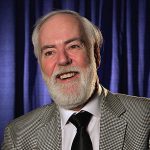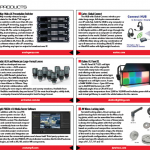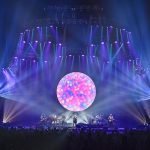
I am thrilled to be back contributing to PLSN, and I could write about how the industry has been on pause for way too long, but that seems very overdone at this point. Hopefully you used some of the downtime to study and practice your programming, but let’s be realistic. It was way too hard for most to imagine lighting and practice on a desk with no actual work prospects for the foreseeable future. Now that work is returning, many are coming back to programming and finding it has been similar to riding a bike — it takes a bit of time to find your way, but then it all comes rushing back.
No matter if you are still waiting for your first post-pandemic gig or if you are already back behind a console, it is important that you don’t just pick up where you left off as a programmer. Some say the industry has not changed, but I say it is time for us to change the quality of programming industry-wide. We need to all do our part to ensure we are not stuck in the past and that we are using technology and staying current with the times. What follows are some suggestions for every programmer to help elevate the profession and keep automated lighting programming moving forward into the future.
Check Your Ego at the Door
Our industry is filled with many great programmers, and you are certainly not the best in the world on your particular desk. I can assure you that there are people who are better and have programmed more shows than you. Always remember that it is a privilege to sit behind a desk and control hundreds of thousands of dollars of lighting equipment. And you might be very good at it, but there is no reason for you to act as if you can accomplish things that others cannot.
Instead of presenting an ego, program to the best of your ability with a goal of this particular show being the best it can be for the audience. Remember always that there are no shows that are all about the lighting programming. Remain humble and grateful for the opportunities.
Know Your Craft
If you want to be in the driver’s seat at a console, then you must have an understanding of lighting principles, purpose, and style. You also need to be familiar with the general workflow of putting together a production and helping to realize a lighting design. No one wants to hire someone who simply knows the syntax of a desk but has little to no idea about the concepts that go into lighting a show. If you only focus on learning to program a console, then you are missing a big slice of the knowledge pie.
In addition, now more than ever, many shows are utilizing video components in some format. It might be I-Mag, broadcast, streaming, or archiving. As a modern programmer working in 2022, you need to understand the principles of lighting for the camera so that you can help the imagery look correct in any video medium.
Speed Things Up
Most productions work with a tight schedule and will expect you to maximize your time and abilities while at the desk. Before each show, you should prep as much as you can within the show file. Utilize a well-organized start-show file and have a planned workflow that will enable you to get as much into the desk as possible during the cueing period.
Take some time before your gig to see if there are processes that you can speed up. For instance, perhaps you could create a macro or learn a new method for updating cues. Utilize some time to read (yes, read) the user manual and see if there are other options to eliminate keystrokes or better manage your process. You will likely be surprised and discover new syntax or features that you never explored before. Once learned, you can increase your programming speed and efficiency to match production expectations in 2022 and beyond.
Layout Views are Here to Stay
Nearly every console now has layout views (plots, magic sheets) that are extremely powerful. These allow you to create your own graphical layout that can be used for fixture selection, custom arrangements of palettes/presets, groups, and other elements. However, the screens are more than customizable touch screen interfaces, they can also provide feedback and dynamically change based on other data or inputs.
For instance, with a plot view, you can quickly see where fixtures are positioned, their intensity and color and other attribute information. In addition, you can have buttons change colors/images depending upon the state of a playback, or you can receive triggers from automation that alter the entire layout on the screen to match the real-world positioning of truss and scenery.
All this information is a treat for your eyes and fingers. It will enable you to be a much faster programmer and allow you to interact with the lighting rig in a much simpler manner. While programmers used to memorize fixtures numbers and read spreadsheets of data, that is quickly becoming a thing of the past as selections and information are available on the dynamic screen layouts.
When working in theatrical environments, a digital magic sheet will also assist the LD as they no longer need to look at a static piece of paper. Now the magic sheet can interact with the data within the desk to provide more than simple selection references for the LD. The creation of digital magic sheets by programmers is a new task, but a very important improvement for the modern time. Work with your LD to see how providing a digital magic sheet (on a dedicated monitor) will assist in his/her needs.
Explore New Features
Did you know that many consoles let you search for data by typing in specific words such as “verse” or “green”? There are conditional functions such as “if” and “filter” that aid in selections and automating syntax. Effects engines offer many new methodologies beyond the simple sine wave.
What about color? Are you still turning encoders to mix color for your fixtures? Many consoles offer unique new methods to aid in color mixing, especially with LED fixtures that are comprised of multiple colors beyond the basic RGBW.
Pixel mapping is not just for anyone wanting to play video across LED pixels. In fact, any fixture can be assigned as a pixel simply based on its color and/or intensity. This allows programmers to apply new concepts as to how intensity and color changes on stage. Perhaps that complex “breathing wave” the LD has requested is best created via pixel mapping instead of futzing with the effects engine.
By taking the time to understand your console’s abilities and features, you can adapt new processes into your programming. I cannot stress this enough. I see many people that program and use the same methods as they did in 2002. But it is now 20 years later, and our consoles have progressed, and we all need to as well. If you don’t like to read, then find some YouTube videos detailing recent software releases and see what is new that could work for you. These innovative tools will enable your programming to be more useful and creative for the production’s needs.
Get with the Times
I urge all programmers to take the time to see how their skills can be improved. In 2022, be sure that you are making use of all the latest features and abilities within the consoles while also following a well-planned workflow. Automated lighting programming has evolved over the last 40 years, and we all need to keep the industry on the cutting edge. This is only accomplished if we each keep moving forward and improving together.
When you do learn something new, be sure to pass it on and share with others. They might just have something they know about to share with you too. In 2022, let’s all work together to keep our craft the best it can be so that shows can continue to look amazing!
Contact Brad at bradschiller.com


